 Home >
Home > Support

Glass Bottle Manufacturing
Xuzhou Shine Packaging is a wholly-owned subsidiary of Xuzhou Yanjia Glass Bottle Products Co., Ltd. We have 15 years of experience in manufacturing glass bottles. We have our own production, mold, bottle cap, and glass bottle deep processing workshops. Our glass bottle production process includes raw material crushing and mixing, batching, melting, forming, and annealing. We can customize the execution of these steps to meet the specific requirements of each glass bottle product.
1. Raw materials for manufacturing glass bottles
The main raw materials used to manufacture glass bottles are sand, soda ash, limestone, and crushed, broken glass. Sand is the main ingredient, limestone provides stability, soda reduces the melting point, and crushed glass is a waste product from the manufacturing process. Recycled crushed glass is used to help conserve raw materials and energy usage.
2. Ingredients in the manufacture of glass bottles
Pre-treatment raw materials, such as silica sand, soda ash, feldspar, dolomite, limestone, manganese, etc. are crushed, mixed, stirred, and iron-containing raw materials are removed. They are continuously fed into the furnace via a belt conveyor.
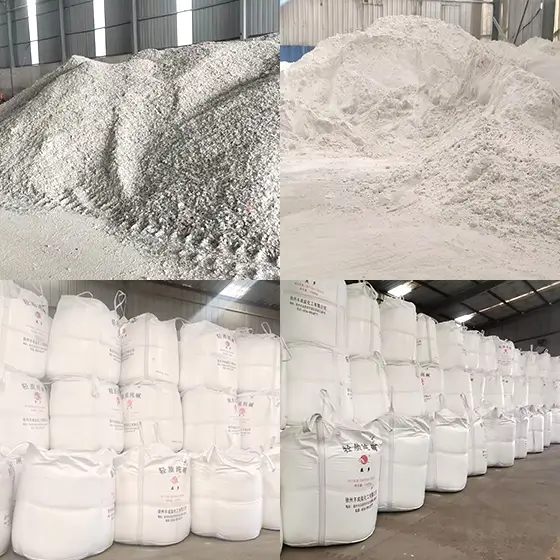
Melting in glass bottle manufacturing process
The glass compound is heated at a high temperature (1550-1600℃) in a trough furnace or tank furnace to form uniform, bubble-free molten glass that meets the requirements of molding, and the molten glass is cooled down to a lower temperature to form a dense state, to prepare for the molding stage.
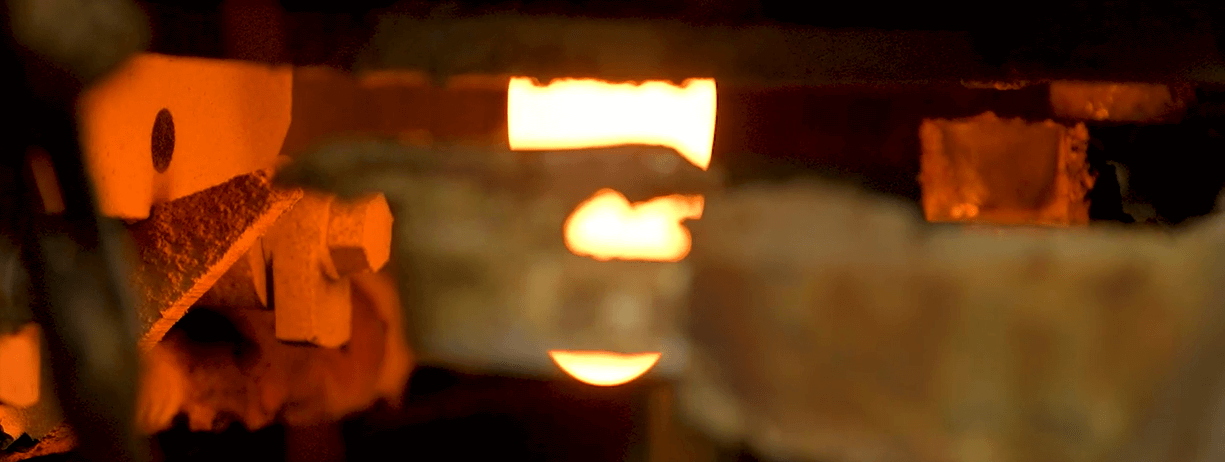
Forming in the glass bottle manufacturing process
The molding process starts at the riser. Here, the glass block is cut down and molded into the desired shape using an IS machine. Using the blow-blow or press-blow process, the machine can very quickly configure the viscous liquid into the finished product. The molded glass containers and bottles are then transferred to a conveyor belt for cooling.
Press and Blow Process
Using gravity, the molten glass is dropped into the machine and a metal plunger pushes it down into the mold to form the parison. After the parison is transferred to the blow mold, the manufacturing process is completed by reheating and injecting air into the bottle to form the final shape. Pressure blow manufacturing processes are mainly used for large diameter containers such as glass mason jars and marijuana jars.
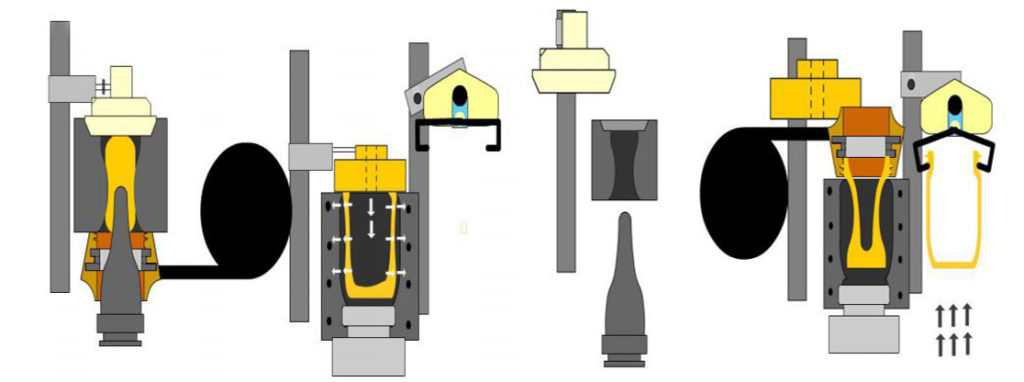
Blow and Blow Process
The cut droplets fall and are compressed into the blank mold in blow molding, using compressed air to push the droplets into place, called a parison, and move to the final mold to be blown again to form the inside of the framed glass bottle. Blow molding can be used to manufacture narrow-necked glass bottles with different neck thicknesses, such as glass essential oil bottles, perfume bottles, etc.
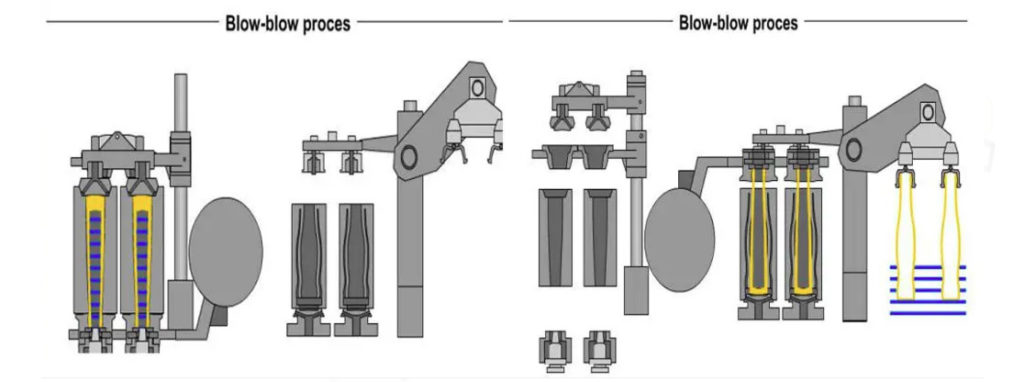
Annealing in glass bottle manufacturing process
Regardless of the process, blown glass containers are usually surface coated after molding, when they are still hot, to make the glass bottles and jars more resistant to scratches, this is known as the hot end surface treatment, and then the glass bottles are taken to the annealing furnace, which mainly reduces the thermal stresses, phase separation or crystallization of the glass products, and alters the structural state of the glass, by heating the glass to the strain-point temperature in the annealing furnace, then cooling it to the room temperature at a certain rate of cooling to room temperature.
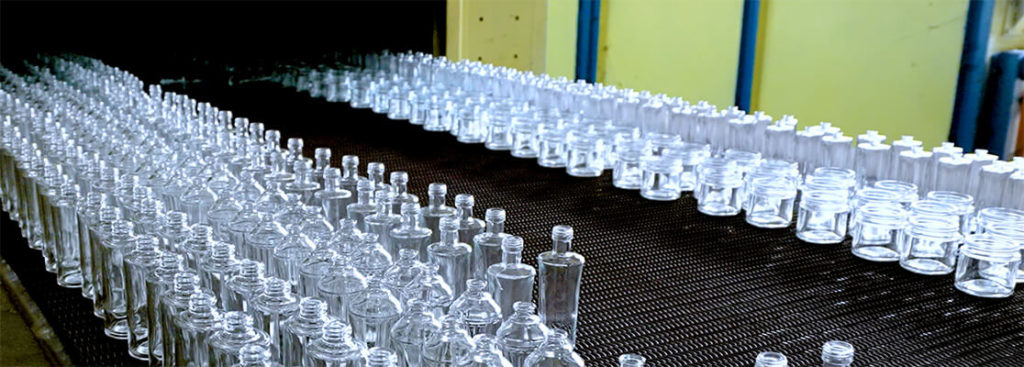
Quality Control
Before the inspection, the bottles are usually treated with a cold-end surface coating that reduces the temperature of the glass container to about 100°C, otherwise, the glass scratches easily. After leaving the cold end of the annealing furnace, to ensure product quality, we use Led Beam Technology (Led Inspection), Camara Inspection Machines, and Integrated Inspection Machines to detect faults that are not visible to the naked eye. These include, but are not limited to: closure surface inspection, dimensional analysis, wall thickness inspection, breakage detection, edge and bottom scanning, and wall scanning. Any bottles that do not meet the criteria are automatically rejected and these rejected bottles are remelted and reused as raw material. Inspections are carried out on multiple levels, performing both automated and manual checks to ensure that the product quality is perfect for the customer.
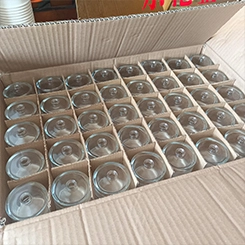
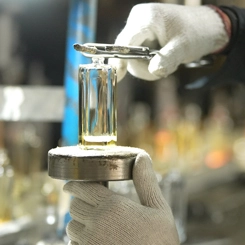
Let's build your project!
Contact us for comprehensive information on perfume bottle production and pricing:
- Elegance and Durability
- Preservation of Fragrance
- Sustainability
- Tailored Design
- Quality Assurance
- Efficient Service
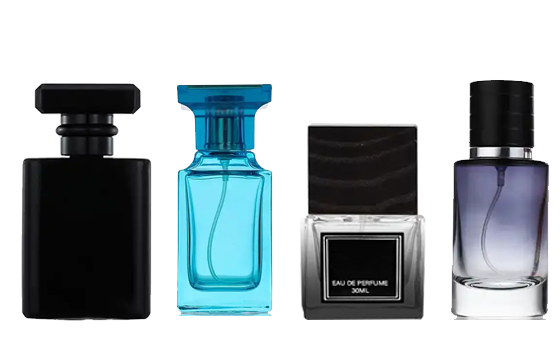

FREE SAMPLE



